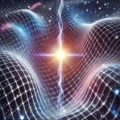Physical Constants and Emergent Space
Abstract
This paper proposes a novel structural analogy for the hydrogen atom: a one-blade rotor with a compensating mass. In this model, the single electron represents a rotating field imbalance—analogous to a one-bladed propeller—while the proton acts as the counterweight that maintains dynamic balance through barycentric motion. Rooted in the Single Charge Hypothesis and consistent with Charge Admittance theory, this model recasts atomic structure as an inherently dynamic process. The implications may shed new light on fine structure, spin behavior, and the emergence of inertial mass.
Introduction
Hydrogen, the simplest atom, has long served as a testbed for theories of quantum mechanics and particle structure. While current models treat the electron as a probabilistic cloud or standing wave, this paper explores a kinetic interpretation: the hydrogen atom as a dynamically balanced system with a single moving imbalance (electron) and a heavy counterweight (proton). Inspired by historical experiments with one-bladed propellers, this analogy suggests that atomic stability may be the result of continuous compensation—not stasis.
Historical Context
Mechanical Analogy: The One-Blade Propeller
One-bladed propellers were a real engineering experiment in the early 20th century, achieving functional balance by placing a counterweight on the opposite side of the rotating hub. The system’s efficiency and stability depended on mass asymmetry and rotational coherence.
In our atomic model:
- The electron plays the role of the moving blade—light, fast, and extended in field reach.
- The proton serves as the dense counterweight, providing balance through positional adjustment.
- The barycenter of the system is not fixed but describes a subtle orbit or precession to maintain equilibrium.
These inconsistencies suggest the binary model may be an artifact of measurement context—not a fundamental truth.
Historical Context
Under the Charge Admittance (CA) framework, fields admit energy according to structural constraints. The electron’s movement is not a particle trajectory but a directional field relaxation. The proton’s “motion” may therefore reflect the field’s backpressure—its reaction to admitting a rotating imbalance.
- This reframes the mass of the proton as a response, not a cause.
- The atomic “shell” is thus a field tension geometry—not a spherical probability zone.
Implications for Quantum Behavior
This model helps explain several observed behaviors:
- Pauli Exclusion: The single electron acts in two modes (spin up/down) due to temporal or phase mirroring within the field.
- Fine Structure: Subtle energy shifts (e.g. Lamb shift) may result from micro-precessions of the barycenter.
- Inertia and Mass: Resistance to motion may emerge from internal rebalancing delay—suggesting mass is a process, not a property.
Relation to Standing Wave and String Models
Unlike string theory, which assumes one-dimensional vibrating objects in higher-dimensional space, this model treats particles as field-localized dynamic systems. It aligns more naturally with standing wave models in which particles arise from field resonance:
- The one-blade rotor fits as a field resonance loop with built-in asymmetry.
- Rather than falsify string theory, the Single Charge Hypothesis supersedes its dualism with a unifying behavioral model.
- Standing wave concepts remain compatible, provided waves represent field imbalances—not fixed oscillators.
Conclusion and Future Work
The one-bladed rotor analogy offers a vivid and functionally consistent view of hydrogen’s structure. It supports the idea that atomic stability is a product of continuous compensatory motion, not static configuration. This dynamic interpretation aligns with the Single Charge Hypothesis, reframes mass, and offers new conceptual tools for interpreting atomic and subatomic behavior.
Future papers will extend this model to multi-electron atoms and explore its predictions for molecular bonding, field coherence, and quantized inertia.
